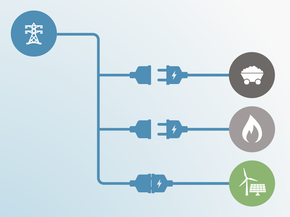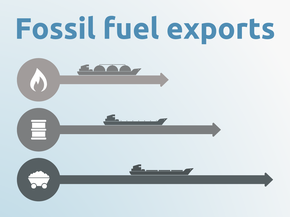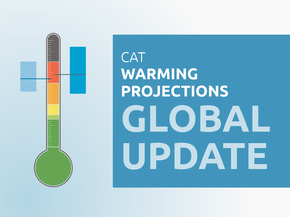Country summary
Overview
Mexico plans to add new coal-fired capacity in 2020. It will reduce electricity generation from existing coal-fired power plants only after 2024 and retire some old capacity after 2028. This is a reversal of the government’s previous plan to steadily reduce the amount of coal-based electricity already from 2017 onwards and it is inconsistent with the short-term steps needed to achieve the Paris Agreement's 1.5°C limit. For the power sector this would mean no new coal plants should be built and emissions from the existing coal fleet need to decrease globally on average by 30% by the year 20251.
Whilst the latest government projections also include a plan to more than double its current renewable energy capacity and almost triple its nuclear capacity by 2030 no concrete budget allocation plans for the latter exist. Our analysis suggests that Mexico will not meet its 2020 nor 2030 emissions targets and will need to implement additional policies, and reverse direction on coal to do so. Mexico has pledged to reduce its greenhouse gas emissions by 22% below baseline in 2030, equivalent to a 9% increase in emissions above 2010 level, but with current policies is on track for 40% increase above 1990 levels by the year 2030.
Mexico’s Nationally Determined Contribution (NDC), covers targets for both emissions of greenhouse gases (GHGs) and black carbon (BC). In its NDC, Mexico proposes to unconditionally reduce combined GHG and BC emissions by 25% below business-as-usual (BAU) in 2030. Mexico also proposes a 40% reduction of GHG and BC emissions by 2030, conditional on certain requirements for the global agreement and international support. The GHG component of these targets translates to a reduction goal of 22% below BAU unconditionally (equivalent to 72% above 1990 levels and 9% above 2010 levels excl. LULUCF), and 36% conditionally (equivalent to 40% above 1990 levels and 11% below 2010 levels excl. LULUCF) by 2030.
While the health and environmental benefits of reducing black carbon would be immediate and clear, the effects on global warming are complex and uncertain.
Based on these targets, we rate Mexico “Insufficient.” This means that Mexico’s unconditional NDC commitment is not consistent with holding warming to below 2°C, let alone limiting it to 1.5°C as required under the Paris Agreement, and is instead consistent with warming between 2°C and 3°C.
According to our analysis, Mexico will need to implement additional policies to reach its proposed NDC targets, but has begun taking steps in the right direction.
After COP21 in Paris in 2015, Mexico introduced a major new clean energy policy—its Energy Transition Law, which includes a clean energy target: 25% of electricity generation by 2018, 30% by 2021, and 35% by 2024. Our analysis reveals that the way in which this law is implemented, and the level of clean energy targeted beyond 2024, will be crucial to shaping Mexico’s GHG emissions trajectory.
Critically, Mexico includes efficient co-generation in its definition of clean energy, which refers to cogeneration plants exceeding a certain efficiency threshold. If a plant uses clean energy and fossil fuel sources, a clean energy certificate (CEL) will be granted for each MWh generated from clean energy. However, these plants will likely be fuelled by natural gas, which is a fossil fuel, and still emits CO2. National projections suggest that the cogeneration plants’ share of the electricity mix could be as high as 5% by 2024 – up from 0% in 2014 (SENER, 2017b). If this goes ahead rather than using entirely zero emission sources, the share of renewables in the 2024 clean energy target could be reduced to 32%, a gap of 3%.
Looking ahead to 2030, Mexico’s latest electricity projections show a sharp increase in nuclear installed capacity in the late 2020s (a 170% increase between 2028 and 2030). This capacity increase corresponds to a 7% share of generation in 2030, up from 4% in 2017 (SENER, 2017b). This is in addition to a projected 31% of generation from renewable sources in 2030. According to Mexico’s Energy Secretary, building this additional nuclear capacity would require several billion dollars of investment, and the next federal government will need to make this decision after 2018 (Valencia Juliao, 2017). However, Mexico could invest in additional renewable capacity instead, achieving the same emissions reductions as with nuclear. Mexico’s latest electricity projections also show a higher share of coal-fired electricity generation than previous projections. An overall of 590 MW of new capacity additions are planned between 2019 and 2021. In comparison to previous projections by the Ministry of Energy where the coal electricity generation share in 2030 was almost negligible (1%), the latest projection suggests a share of 8%.
Mexico’s progress in policy planning and institution building over recent years has been remarkable, including the April 2012 adoption of the General Law on Climate Change (LGCC in Spanish), one of the world’s first climate laws—and the first in a developing country. Under this law, Mexico aims to reduce its emissions by 50% from 2000 levels by 2050. The NDC proposal is consistent with this objective, as is Mexico’s Mid-Century Strategy, which it submitted to the UNFCCC in November 2016.
1 | Based on a study by (Kuramochi et al., 2017)
Further analysis
Latest publications
Stay informed
Subscribe to our newsletter







